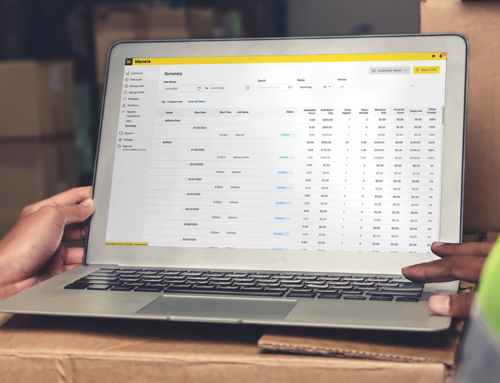Wonolo
After a couple of years away from in-person events, Wonolo attended the 2022 RILA LINK Conference in Dallas, Texas. We learned about the status of the retail supply chain and were able to network with leaders from big box retailers and 3PLs such as GAP, ULTA Beauty, Office Depot, and NFI to share Wonolo’s on-demand labor platform.
Sarah Thomas, the first female NFL official, reminded us that while we’re making huge leaps advancing as a society, breaking glass ceilings, and improving the quality of life for all, there’s still a lot of room for change that can level up operations.
Our key takeaways from RILA LINK 2022
Almost every breakout session attended by Wonolo touched on the labor shortages these retailers and logistics companies have been facing since the start of the COVID-19 pandemic. Here are several of their initiatives to solve their labor shortage struggles:
1. Outsource to scale rapidly when needed
Best Buy ramped up car and van service at nearly 400 stores so customers could enjoy contactless deliveries of thousands of SKUs without leaving their homes. Service provider Roadie was thrust into the challenge of instantly scaling delivery capacity to match record demand while enhancing the last mile customer experience.
2. Adapt quickly to changing demand
Speed of fulfillment is a major source of brand loyalty. Faster shipping, accurate tracking, flexible delivery options, and a seamless returns process help retailers stand out in the digital crowd. IKEA, for example, plans to convert its parking garages into fulfillment centers (as well as use 100% reusable energy for their operations and stores).
3. Tune in to market trends
Foot Locker is working on casting a wider net to attract more customers by utilizing technologies such as TikTok and YouTube.
Wonolo’s take?
We were also excited to run into current Wonolo customers who’ve already begun leveling up their operations with Wonolo by scaling up or down as needed with demand and finding reliable workers.
Many believe that the COVID-19 pandemic has played a huge role in fueling labor shortages, making it difficult for companies to find the workers they need to maintain productivity via the traditional route. But labor shortages in the U.S. existed well before the pandemic.
However, it’s become evident that more workers are exchanging the rigidity of working a typical “9-to-5” job for the flexibility and freedom that the gig economy can provide.
In fact, according to reports from Staffing Industry Analysts (SIA), an estimated 48 million people worked hourly jobs in the U.S. in 2017, making up about 31% of the American workforce.
Those numbers have steadily increased over the last few years. There were 51.5 million contingent workers in the U.S. in 2020, representing 35% of the nation’s workforce and generating $1.3 trillion in revenue.
Don’t fall behind
The organizations that stay competitive in the labor market will be those that adapt to the changing wants and needs of the modern worker. Wonolo is uniquely positioned in the market and has developed the tools over the past 8 years to deliver quality and consistency for our customers.
Want to learn more about how you can tap into the resources the gig economy can provide? Download our The Voices of the Gig Economy 2022 report where workers using the Wonolo app to find jobs – “Wonoloers” – shared what’s driving them to look for new jobs and/or additional opportunities. You might be surprised by the results.






